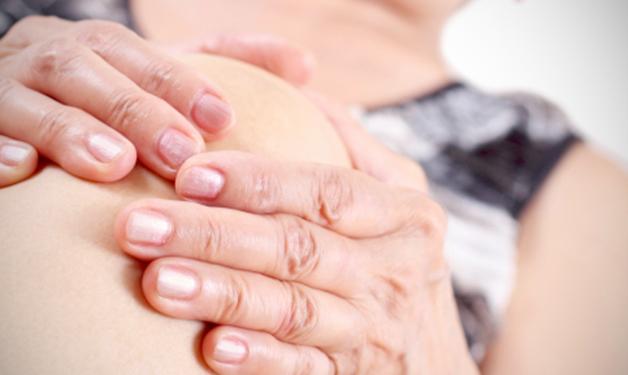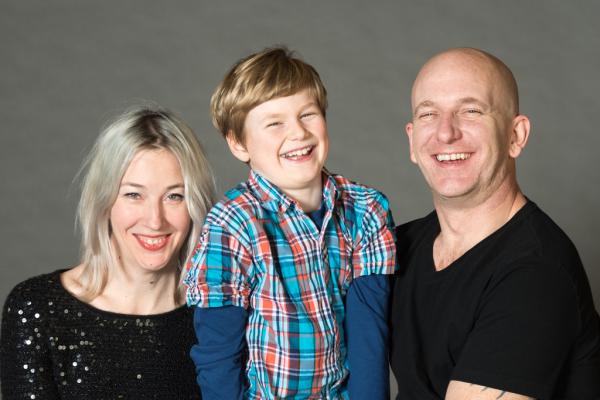
“I say yes to participating in research because if people don’t say yes, we’re never going to know what the best health treatment approaches are.”
– Bronwen Cripps, Coquitlam
Sixty-eight year old former teacher Bronwen Cripps has always been active. But in the summer of 2014, her ability to be active was hampered by her knee noticeably hurting while walking.
“I could just tell something was wrong,” says Cripps, who lives in Coquitlam. “I went to see my doctor about it and thought it was a relapse of the meniscus deteriorating, but she pointed out that that diagnosis was for the other knee!”
Knee osteoarthritis (OA) is common, affecting one in 10 adults, and can be debilitating. Being active is effective for improving pain, mobility, and quality of life. Many patients, however, find it hard to start physical activity without making OA symptoms worse.
Soon after Cripps was diagnosed with knee OA, she heard about a VCH Research Institute (VCHRI) clinical study assessing the efficacy of MONITOR-OA–a physical activity counseling program designed to improve physical activity and reduce sedentary time in patients with knee OA. MONITOR-OA has three components to help people with knee pain set goals to be more physically active safely and at their own pace: first, a group education session; second, the use of a Fitbit Flex–a wearable device; and third, online and telephone coaching by a registered physiotherapist.
Principal investigator and VCHRI scientist Dr. Linda Li designed MONITOR-OA based on literature showing that people will more likely adhere to physical activity or an exercise program if they receive on-demand feedback about their goal achievement and timely advice from health professionals.

“We’re hoping the study will reveal the conditions and resources required to implement this type of program within the community, which will help later with moving the evidence into action more quickly,” says Dr. Li.
“Sometimes what people need is feedback about whether their physical activity is correct and, more importantly for individuals with arthritis, that it isn’t hurting the joints,” explains Dr. Li, who is also an associate professor in the Department of Physical Therapy at the University of British Columbia (UBC) as well as Harold Robinson/Arthritis Society Chair in Arthritic Diseases and Canada Research Chair in Patient-Oriented Knowledge Translation at UBC and Arthritis Research Canada. “And we also see this as a great opportunity to leverage the current popularity of wearable technologies to help improve patients’ health.”
One significant part of MONITOR-OA is interviews with patient participants, physical therapists, and everyone involved in delivering the intervention to better understand the barriers and facilitators in implementing such a program.
Also significant is the use of the Fitbit Flex, which allows individuals to share information about their activity level with a physiotherapist regardless of where they live and without a face-to-face appointment.
While Dr. Li’s work focuses on physical activity, her research also centres on the importance of knowledge translation.
“We have nearly two decades of research showing that being active is good, especially for people with chronic diseases like arthritis. However, despite all of the programs and information out there, it seems as though there’s still a gap,” explains Dr. Li.
“We know very well that research is being done, but often new knowledge doesn’t get to the public in a timely manner, nor is it used in a way that benefits them–physical activity is an example of this,” she says.
“Our work aims to help people clarify whether exercise, monitoring, and a virtual connection with a physiotherapist is a good option for them,” she adds. “And the more enthusiastic support we get from people to participate in the study, the faster we can finish the trial and provide them that information.”

Dr. Li and her research team are actively recruiting for the MONITOR-OA study and are seeking individuals with early stage OA in one or both knees and who have not had a steroid injection in either knee in the past six months. Participants must be able to be independently physically active and can either have a knee OA diagnosis from their doctor, or, if they have symptoms of OA but are undiagnosed, they can undergo the researchers’ screening.
Cripps describes her own participation in the MONITOR-OA study as positive.
“I personally found it was just really good to make sure that I knew what were the best approaches out there and I liked how the program was run,” she says. "And you learn a lot every time you do something like this."
Without hesitation, Cripps adds that she would encourage others to participate in clinical trials and studies.
“Of course I would–I already am!”
For more information about MONITOR-OA, or to participate, contact Reserach Coordinator Navi Grewal at 604-207-4053 or 1-844-707-4053, or email her ngrewal@arthritisresearch.ca.
THIS IS ONE PATIENT’S STORY OF PARTICIPATING IN A CLINICAL TRIAL. YOUR EXPERIENCE MAY DIFFER. LEARN MORE ABOUT CLINICAL TRIALS BEFORE PARTICIPATING.


